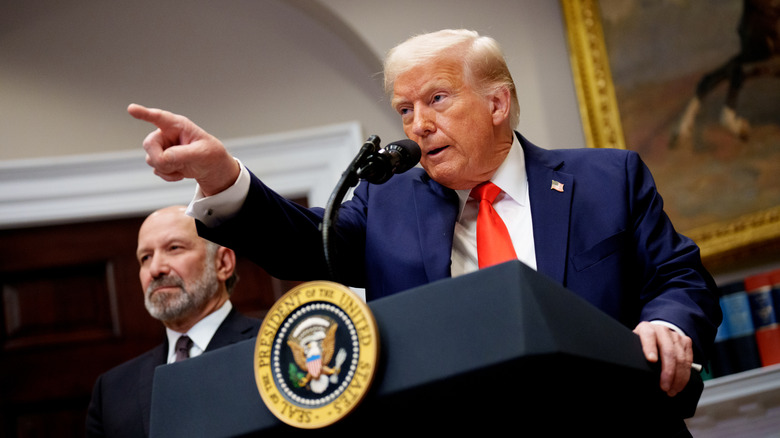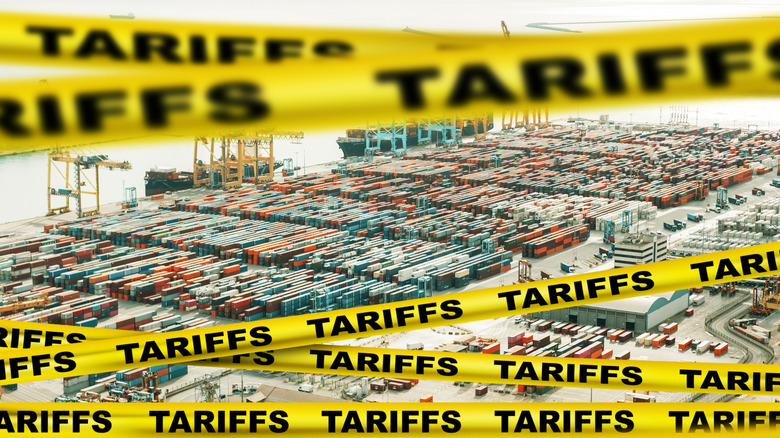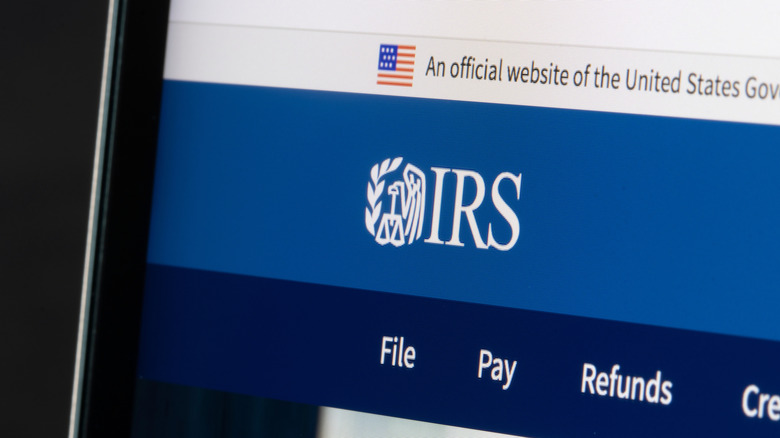Why Trump's Plan To Eliminate Income Tax Is Doomed To Fail
Donald Trump made a lot of significant promises to voters while on the campaign trail. While certain tax-related issues like his promise to end taxation on tips and overtime pay may have been driving factors in gaining the working class vote — although watchdog groups question how these policies will negatively impact Social Security — other issues like Trump's hardline stance on immigration appealed to a wider range of voters. That said, one of the more substantial and rather extreme promises he made while campaigning was the controversial idea of completely ending income taxes for American citizens.
Income taxes are a significant source of revenue for the American government, and getting rid of them altogether could have significant consequences for the economy of the country. In fact, according to the U.S. Treasury, so far in fiscal year 2025, 52% of total federal revenue came from individual income taxes. This makes it abundantly clear that getting rid of income taxes altogether would be an extremely difficult task. With that in mind, let's explore how Trump hopes to make this policy work, and why his approach is doomed to fail.
Why abolishing income taxes is impossible
The U.S. government has been relying on income taxes as a significant source of government revenue for well over 100 years. These taxes greatly contributed to the $4.92 trillion dollars worth of government revenues collected in 2024. However, Trump now proposes shifting the country to an economic position where the government leans on hefty tariffs — instead of income taxes — to make up revenues.
For starters, understanding what tariffs are and who pays for them is particularly important for understanding Trump's tactic. Namely, a 2024 study by the Pierson Institute for International Economics estimated that Trump's proposed tariffs — of 10% across the board and 60% on Chinese goods — would only net around $225 billion dollars annually. This is not only far less than the $2 trillion in revenue that Trump has said he hopes to achieve from them, but is also significantly less than the $2.9 trillion generated from personal income taxes in 2024.
It's also important to realize that even if Trump pushed his tariff policies even further — to 50% across the board, they still would only net around $780 billion annually. Plus, these actions would only end up further hurting U.S. consumers and businesses by significantly driving up inflation in the process. Not only do tariffs not make up for the loss of income that would occur as a result of abolishing personal income taxes, but they could make the economic situation even worse for many consumers.
America's history with income taxes
For anyone who has lived in the U.S. in the last century paying income taxes has been a regular part of your annual duties as U.S. citizens. However, this has not always been the case. In fact, before 1861 the U.S. government largely relied on tariffs as their main source of revenue. While this worked well for a while, the period during the Civil War necessitated the government needing more money — and this need for more money is still at the core of why tariffs don't work as a replacement for income taxes.
That said, the first official tax on income was established in 1862, but was later abolished after the Civil War, only to be renewed again in 1909 when the 16th Amendment (which established Congress's right to impose a federal income tax) was passed by Congress — and officially put into effect in 1913. As the scale of the country — and therefore its economy — has dramatically grown since 1913, so too has the country's reliance on income taxes as its primary revenue source. With that said, remember to file your taxes on time or you'll find out exactly what happens when you miss the tax deadline.


